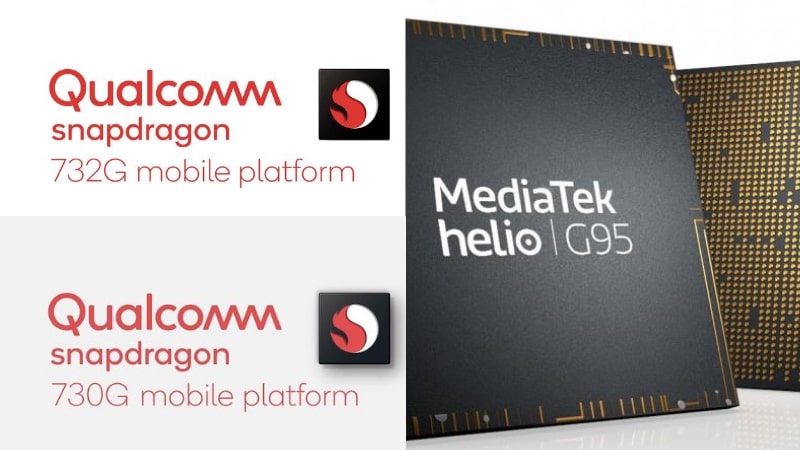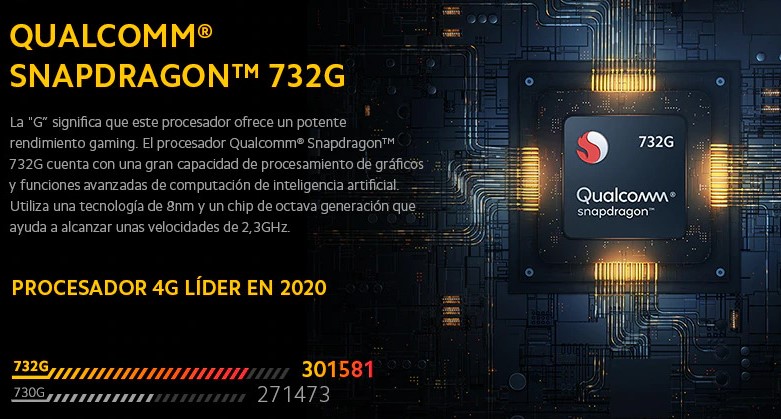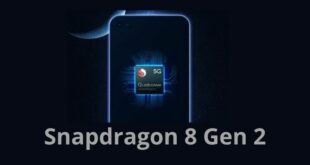Qualcomm has launched the latest 700-series Snapdragon processor, the Snapdragon 732G. The Snapdragon 732G is the successor of the Snapdragon 730G processor, launched in April 2019. The latest Snapdragon 732G is somewhat similar to the Snapdragon 730G with some minor changes. With 8nm FinFET process technology and powerful CPU and GPU performance, the Snapdragon 732G is said to be more efficient than the other 700-series Qualcomm processors. Smartphone brand Poco has confirmed that the Snapdragon 732G will be housed in Poco X3. The Snapdragon 730G was housed in the Poco X2 device.
On the other hand, MediaTek has also unveiled Helio G95 SoC as an improved version of the most popular Helio G90T chipset. Helio G95 SoC is first featured on Realme 7. In this article, we have made a detailed comparison of these three mid-range processors, stating their pros and cons.
Helio G95 vs Snapdragon 732G vs Snapdragon 730G
Manufacturing process
The Snapdragon 732G and the Snapdragon 730G both are fabricated with 8nm FinFET process technology. Therefore, both the processors will be equally power efficient. So, it’s a tie between the two processors regarding the manufacturing process technology. On the other hand, Helio G95 is built on TSMC’s 12nm fabrication process. This makes the G95 less efficient than 732G & 730G by a big margin of 4nm.
CPU
Regarding the CPU unit, the Snapdragon 730G is an octa-core processor. The SoC is built with a dual-core Kryo 470 ARM Cortex-A76 clocked at 2.2GHz and six cores of Kryo 470 ARM Cortex-A55 clocked at 1.8GHz. On the other hand, the Snapdragon 732G has the same CPU configuration as the 730G. The built materials of the cores of both processors are also the same. The only difference is the clock speed of the A76 core of the Snapdragon 732G is higher than that of the Snapdragon 730G. With 732G, we see dual ARM Cortex-A76 CPUs operating at 2.3GHz (+0.1GHz over the 730G). Though it’s a minor change, it will result in higher performance of the latest Snapdragon 732G.
The Helio G95, on the other hand, packs two ARM Cortex-A76 cores at 2.05GHz and six Cortex-A55 power-efficient cores at 2GHz. So, in the CPU department, Snapdragon 732G is the winner.
GPU
The GPU unit in both 732G and 730G is the latest Qualcomm Adreno 618. But Qualcomm has said that the graphics rendering speed of the Snapdragon 732G is 15% higher than the Snapdragon 730G. Hence, in terms of GPU performance, the Snapdragon 732G will be more powerful and efficient.
On the other hand, MediaTek Helio G95 has ARM Mali-G76 MP4 GPU with up to 900MHz clock speed. According to Notebookcheck’s Adreno 618 vs Mali-G76 MP4 comparison test, we see Mali-G76 MP4 has 23% better performance than Adreno 618. So, in the GPU section, Helio G95 is the winner.
Camera
The Snapdragon 732G has Qualcomm Spectra 350 Image Signal Processor. The dual camera sensor supports up to 22MP at 30fps and single cameras up to 48MP with muti-frame processing and 192MP snapshot capabilities. It supports 4K Ultra HD video capture at 30fps. Moreover, the camera unit captures slow-motion video in 1080p at 120fps and 720p at 240fps. Additionally, it features Rec. 2020 color gamut video capture and up to 10-bit color depth video capture.
The camera unit and features of the Snapdragon 730G are exactly similar to the Snapdragon 732G. Therefore, no difference can be observed in the camera sensors of both processors.
The Helio G95, on the other hand, comes with a 3X ISP that offers a single camera of 64MP at 22.4fps or 48MP at 30fps. It also supports a 24MP + 16MP dual camera at 30fps and 4K 30fps video recordings. Other camera features include AI Face Detection, Single-Cam/Dual-Cam Bokeh, HW depth engine, AINR, Multi-Frame Noise reduction, and more.
Display
Snapdragon 730G SoC has QHD+ 3360 X 1440 display pixels. The external display supports 4K Ultra HD, and the on-device display supports up to Quad HD+. Qualcomm has not made any changes in the latest Snapdragon 732G in terms of the display unit. Also, both processors have the same display features. Hence, it’s a tie between the 732G and 730G processors. As far as Helio G95’s display is concerned, we get the support of a Full HD+ (2520 x 1080) display.
Modem
Both 732G and 730G chips come with a Qualcomm X15 LTE Cellular modem. The maximum download speed is 800 Mbps, while the maximum upload speed is 150 Mbps in both processors. In terms of connectivity, both the processors will be equally efficient. With Helio G95, we get a Cat-12 4G LTE WorldMode modem that comes with multiple connectivity features such as 3x CA, 4×4 MIMO, and 256QAM.
Benchmark Test
Talking about the Geekbench v5 benchmark test, the Snapdragon 732G-powered Poco X3 has achieved 571 points in the single-core test, while the SoC has recorded 1766 points in the multi-core test. Its predecessor, Snapdragon 730G, which was packed with Poco X2, has scored 547 points in the single-core and 1724 points in the multi-core test. We will soon add Geekbench scores of Helio G95.
| Processor | Geekbench single-core scores | Geekbench multi-core scores |
|---|---|---|
| Snapdragon 732G | 571 points | 1766 points |
| Snapdragon 730G | 547 points | 1724 points |
| Helio G95 | Coming Soon | Coming Soon |
Talking about the AnTuTu scores, the Helio G95-powered Realme 7 smartphone has recorded 3,02,716 points in Antutu.
On the other hand, as per the promotional image, Qualcomm’s 732G and 730G have managed to get 3,01,581 points and 2,71,473 points in Antutu, respectively.
So, we see that both Helio G95 and Snapdragon 732G are equally capable chips to power mid-range devices. At the same time, 730G sits last with around 31000 points less.






